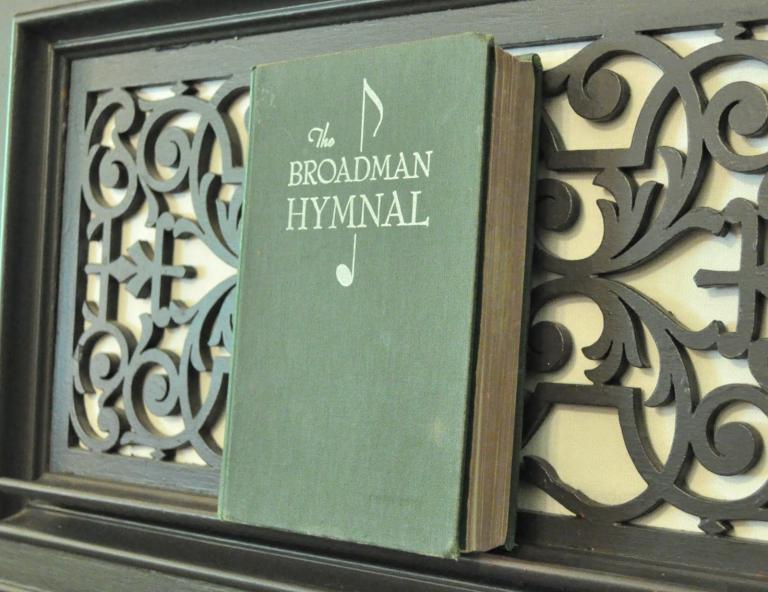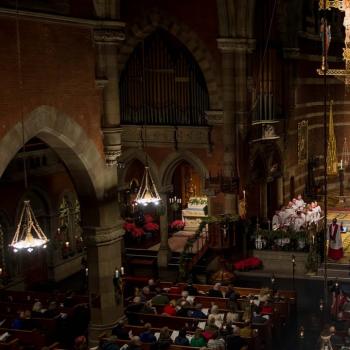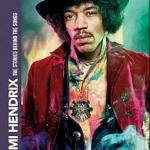Gonna Take a Sentimental Journey
When I was a kid, I thought I really really loved hymns. At least I thought I did.
We didn’t sing them much at my 80s-fabulous megachurch, but I learned a few in children’s choir, I learned them for piano lessons, and there were the occasional trips to visit my grandparents over a weekend, where I would put on my Sunday best, park my butt in the cushioned pew, and when the time came for the “song service,“ I would pick up the well-worn 1975 Baptist hymnal in the pew rack, and turn to whatever number was coming up first.
If I was really, really lucky, we would sing the grandest, most formal, sacred “hymn” ever written.
Number 475, “Victory in Jesus.”
Got My Bag, Got My Reservation
The 1960s Allen would snap and pop its way into the introduction. After quite a bit of penultimate measure retardation, the pianist would fly into that familiar octave-chord-octave-chord pattern in her left hand. If she was really good she could play the melody in octaves, too. These morning calisthenics meant we were supposed to start singing
And let ‘er rip they would at the First Baptist Church of Madisonville, Texas. The only victory that could make a Southern Baptist Church shout with more enthusiasm would be a Super Bowl victory.
At my home church in far southeast Houston we didn’t sing many “hymns. They didn’t get to be the fourth largest make a church in the Houston area by singing anything with substance to it. Every once in a while we might do a stanza or two of one of those stuffy ones, like “All hail the power of Jesus name” or “Holy, holy, holy,” but rarely anything that could get people all excited like “Victory in Jesus.”
But every now and then, just when you thought you were condemned to sing stupid 1980s praise choruses forever, ol’ Brother Bill, who seemed old but I think he was only about 29 at the time, would put his microphone back into the stand, take the 12 minutes necessary for him to button his double-breasted jacket, and he would start waving his arms. And when you saw the arm wave coming you knew we were about to have some fun.
Yep. We were going to sing the good ol’ “hymns.“
Like a Child in Wild Anticipation
We didn’t usually sing enough of them, and they were usually rolled into a medley, but hey anything was better than all of that usual crap like “The joy of the Lord is my strength, ” “It’s amazing what praising can do,” or “Lord, be glorified.”
One of brother Bill’s favorite medleys could possibly be titled “The Redeemed Medley.” We’d start off with the first stanza of Fanny Crosby’s “Redeemed, how I love to proclaim it.” If we were really lucky, and if somebody besides Brother John was preaching that night, like Brother Larry the bus minister (yes, that was a real thing) who only preached for 15 minutes or so, we might get to sing another stanza or two. I never remember singing stanza 4, but that one was about going “home” to “heaven,” and with all the traumatizing I’d had from the rapture-ready dispensationalists I didn’t mind skipping it.
Next would be another great “hymn,” “Since I have been redeemed.” We would usually only do one stanza, but I’ll always remember my mom singing the alto line on the refrain as loudly as possible.
Then we’d sing another one of the greatest “hymns” of all time, “Since Jesus came into my heart.” We might do three stanzas if we were really lovin’ on Jesus that night. The last time through the refrain Brother Bill’s arm waving would slow down into deliberate slashes. After starting around quarter note = 378, by the time we got to the high E-flat on the word “roll,” we’d slow down to approximately quarter note = Christmas. And we’d sit up there on that high E-flat for the longest, most glorious, self-indulgent fermata.
I could have sworn I saw the pastor’s hairpiece levitate.
Now there are a few of these great, old traditional Baptist “hymns” that are more reverent, worshipful, and holy then any of the rest of them. You know this because they contain a high F in the melody.
Like I said, there are only a few of these.
There’s “He Lives,” that I-know-the-resurrection-is-real-
There’s one called “Ring the Bells of Heaven” that must be so holy that no one was allowed to sing it.
There’s also the extra holy “He Is Able to Deliver Thee,” with the two high F’s in a row.
Now the last “hymn” in this medley must’ve been the holiest of all, because there were two high Fs, followed by an optional F on the last chord. This one was called “Saved, Saved.” The last time through the refrain the singing would get so freaking intense that I thought we were actually ushering in the rapture right there in the evening service. That, of course, never happened, but boy did this “hymn” make you feel close to Jesus or somebody.
Countin’ Every Mile of Railroad Track
There are other experiences with these hymns that I remember. Some of them I hold so dear in my memory that I can almost sense being there again. One was at my other grandparents church, First Baptist Church, Centerville, Texas. I must have not been any older than 4 or 5, maybe even younger. Time spent with this set of grandparents was special, almost sacred. Growing up, there were none who made me feel as loved and as free as they did.
This particular Sunday morning I must have been feeling a little more squirrley than normal, and with a big chuckle my grandpa gathered me up in his arms. I remember feeling the callouses on his rough, leathery hands, evidence of his life‘s vocation and avocations. The faint smell of Old Spice aftershave still wafts through my minds. My ear pressed against his chest, I absorbed the vibrations from his rough, strangely melodious baritone:
Jesus, Jesus, Jesus,
Sweetest name I know,
Fills my every longing,
Keeps me singing as I go.
It’s one of my most treasured memories. Even as an adult, it’s a place I can go to feel safe and secure. And those experiences, those songs, those memories are thoroughly cherished all these years later.
But when it comes to worship in the church, I have to let them go. While I’ll never forget the feeling of my grandpa holding me close, most of those gospel songs aren’t the right song for the people of God. If I’m not willing to let them go, I’m guilty of bowing down at the false idol of sentimentality.
Never Thought I Could Be So Yearny
I no longer believe in the rapture, so I can’t sing about “winging my flight to worlds unknown.”
Jesus hasn’t built me a mansion in glory, he’s prepared a room, and it’s not my final destination.
I think it’s dangerous to proclaim that Jesus lives because “he lives within my heart.” Especially as someone with depression, my faith can’t lean on my own emotional perception.
I don’t believe the Bible teaches a Platonic duality between heaven and earth.
Every day with Jesus is not sweeter than the day before.
Worship is not about how Jesus keeps me singing as I go.
The escapism of many of these songs is nothing short of a distraction. The gospel isn’t about giving us a heavenly daydream to tide us over until we lose gravitation and fly away.
Why Did I Decide to Roam
See, many years later I learned that those “hymns” I loved to sing as a kid weren’t really hymns anyway. They were gospel songs borne out of a particular theological framework I have long since abandoned. And while mainstream hymnody has adopted the best from that stream into its ranks, most of it is deservedly falling away. I have to let it fall away, too, because if it’s not what we believe, it’s not good enough in worship. And for me to stay just because of the good feelings would be nothing short of idolatry.
We’ve made this temptation worse with our preferentially-based worship formats.
I’ll say it plainly: offering multiple worship styles just sucks. We should just all worship together. The idea that worship needed to be reinvented, remade in the present generation’s image is nothing short of moronic. But this idea introduced a terrible toxicity into what we now often call “traditional worship.” The existing service, the one that used to just be called “church,” was reduced to being a sentimental, get-your-blue-haired-friends-together-and-sing-the-old-favorites hour. Preferential worship has turned liturgy remained as breathless corpses, museum pieces, mere relics that reminded us of a time gone by.
Don’t Take That Sentimental Journey Home
I want to say this clearly: there is nothing inherently wrong with sentimental and nostalgic feelings coming up during worship, but we need to recognize the danger. If we’re not vigilant, and especially if we encourage people to follow those feelings into a particular worship “style,” we lead them into a false understanding of worship, and ultimately, toward idolatry. And when this happens, worship becomes the ultimate self-indulgence, a frustrated, masturbatory exercise in narcissism.
Then, Doris, we might as well stay home.
And let’s face it, church: most of us already are.

















